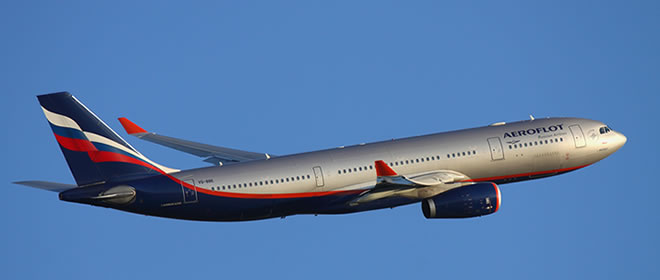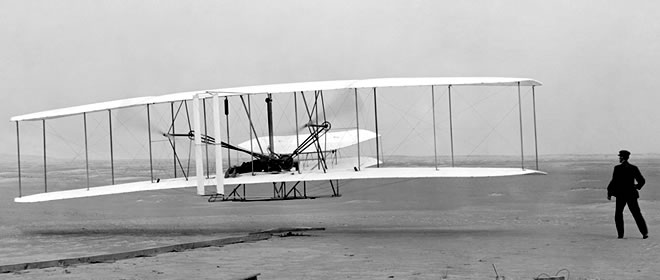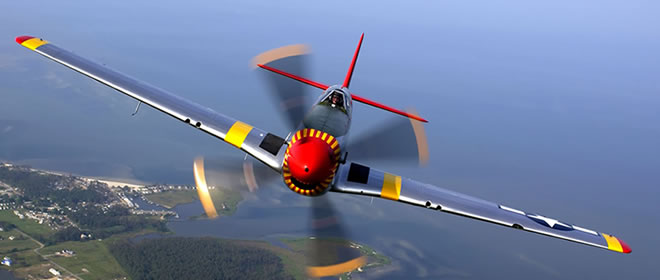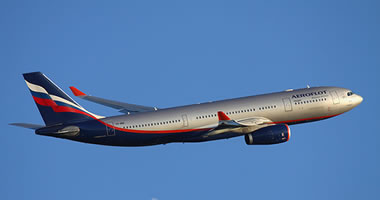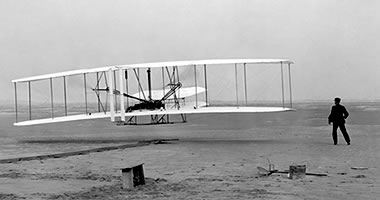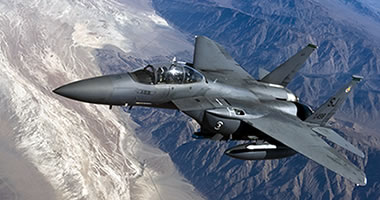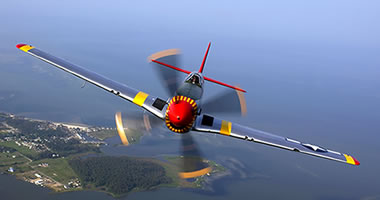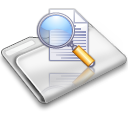Sculthorpe
SCULTHORPE: Military aerodrome
Note: This picture (2009) was obtained from Google Earth ©
Military users: WW2: RAF Bomber Command 2 Group
21 Sqdn (Lockheed Venturas, later DH Mosquitos)
342 (Lorraine) Sqdn (Douglas A-20 Bostons)
464 (RAAF) & 487 (RNZAF) Sqdns (DH Mosquitos)
Post 1945: USAF 47th TBW 19th TRS
It appears that in the 1950s and 1960s, (perhaps beyond ?) the types that were regularly seen here were:
Boeing B29 Superfortress
Boeing KB50 (An air-to-air tanker version of the B29 Superfortress bomber)
De Havilland Canada DHC.1 Beaver
Douglas B66 Destroyer
Fairchild C119 Flying Boxcar
Lockheed T33 Shooting Star
North American B45 Tornado
Location: N of A148, NE of B1454, 4nm WNW of Fakenham
Period of operation: 1943 to ? Still operational in 1985
Runways: I have no details about the runways before the end of 1944 when the aerodrome was under re-construction for the USAFE and intended for use by ‘very heavy bombers’. The new runway layout was:
18/36 1829x91 hard 06/24 2743x91 hard
13/31 1829x91 hard
I expect the original runways were typical, one at 1829x46 and two at 1280x46 but were the re-constructed runways actually built to the late 1944 specification? It seems to me that this then popular idea of broadening many runways to 100 yards, (91 metres), was soon dropped with the realisation that the new nosewheel type heavy aircraft are much more directionally stable when landing and taking off. Even at HEATHROW today for example with dozens of the largest wide bodied jets arriving and taking off every day and with runway lengths up to 3902 metres a runway width of 45 metres is seen as being perfectly adequate even in severe crosswind conditions. I later learnt that SCULTHORPE was intended to be a base for the Convair B.36 hence the larger and strengthened runways.
However, possibly before the B.36s actually arrived it was decided by the Americans that they’d be too much at risk in eastern England and the RAF should occupy the 'front line' instead.They were then deployed at BRIZE NORTON, FAIRFORD and UPPER HEYFORD. So the question remains - were these larger runways completed here?
The more observant might well wonder why many runways in this book listed as being 45 metres wide in modern flight guides are often described by me as being 46 metres wide. The answer is very simple because in researching this Guide I had to deal with a huge variety of runway lengths and widths many if not most of which were originally measured in yards. As the measurements of runways are now in metres I decided that 0.5 of a metre should be the break point. Consequently as the typical standard British hard WW2 runway was 50 yards wide, (45.72 metres), I list them as being 46 metres wide. It’s all a bit of a ‘fudge’ or compromise of course as I have absolutely no intention of driving around visiting aerodromes with a tape measure to establish the truth of the matter to the last inch or centimetre.
NOTES: It now appears that RAF SCULTHORPE has another very interesting aspect to its history. The subject being of the RAF performing spy-missions over the USSR, largely to assist the Americans, (most seem to agree today?), appears to go back further than most realise? In some trawlings via Google for another subject I came across this: “In the spring of 1951, the RAF formed a secret “Special Duty Flight” of three aircrews to fly North American Aviation RB-45C reconnaissance aircraft. Led by squadron leader John Crampton and his navigator, Flight Lieutenant Rex Sanders, the British airmen flew from England to Barksdale AFB in Louisiana to begin formal flying training in the RB-45C, under the presumed disguise of British-American air refuelling trials. Late in the fall of 1951, the RAF aircrews returned with four American aircraft (one acting as a spare) to Sculthorpe Royal Air Force Base in Norfolk, where a detachment of SAC RB-45Cs was already stationed. Lt. Col. Marion C. (“Hack”) Mixson arrived in March 1952 to command the SAC detachment, to which Crampton’s Special Duty Flight was attached. In the weeks that followed, Mixson, Crampton, and Sanders dealt with the British Air Ministry at the highest levels. In approving the mission, Churchill took a breathtaking political risk.”
THE CUBAN MISSILE CRISIS
In his book 'Britain on the Brink' author Jim Wilson tells us that over the weekend of the 27th and 28th October 1962 the world was poised on the edge of World War Three. The USAF had been brought to DEFCON Two, the state of readiness before actually going to war. The RAF were similarly poised as were the Soviet forces. But it appears, in Britain even parliament had not been informed and the public were blissfully unaware of the developments. Incredibly it seems, the huge network of 'bunkers' and the associated telecommunications network, all built for exactly this eventuality, lay idle and unoccupied.
All the USAF and RAF V-force bombers were armed with nuclear weapons, and the USAF had part of its B-52 Stratofortress force already airborne awaiting the signal to attack. Mr Wilson also tells us that ; ".....Sculthorpe in Norfolk, [was] at that time the biggest nuclear bomber base in Europe with some 10,000 personnal." The bombers based here were Boeing B-47 Stratojets, but I suppose there may have been some B-52s involved?
Terry kane
This comment was written on: 2019-08-06 17:30:06Opening of museum 11th Aug. What Time please?
Reply from Dick Flute:
Hi Terry, I shall keep this request posted. Hopefully somebody can help. Best regards, Dick
Ian Brown
This comment was written on: 2019-08-30 21:48:22Hi. I'm the creator of the RAF Sculthorpe Heritage Centre. We will be open on the first Sunday of each month from February to November. At the moment it's 12.00 to 16.00. All the information can be found on our FB page RAF Sculthorpe The Forgotten Cold War Base. Thanks Ian
Melvin Barber
This comment was written on: 2020-11-19 15:28:49I was born and raised in the village of Guestwick, i was raised by my mother and grandparents on Guestwick Green. My father was with the American Air Force stationed at Sculthorpe his name was David Holt. Anyone have info on Base Personal ??
We'd love to hear from you, so please scroll down to leave a comment!
Leave a comment ...
Copyright (c) UK Airfield Guide

